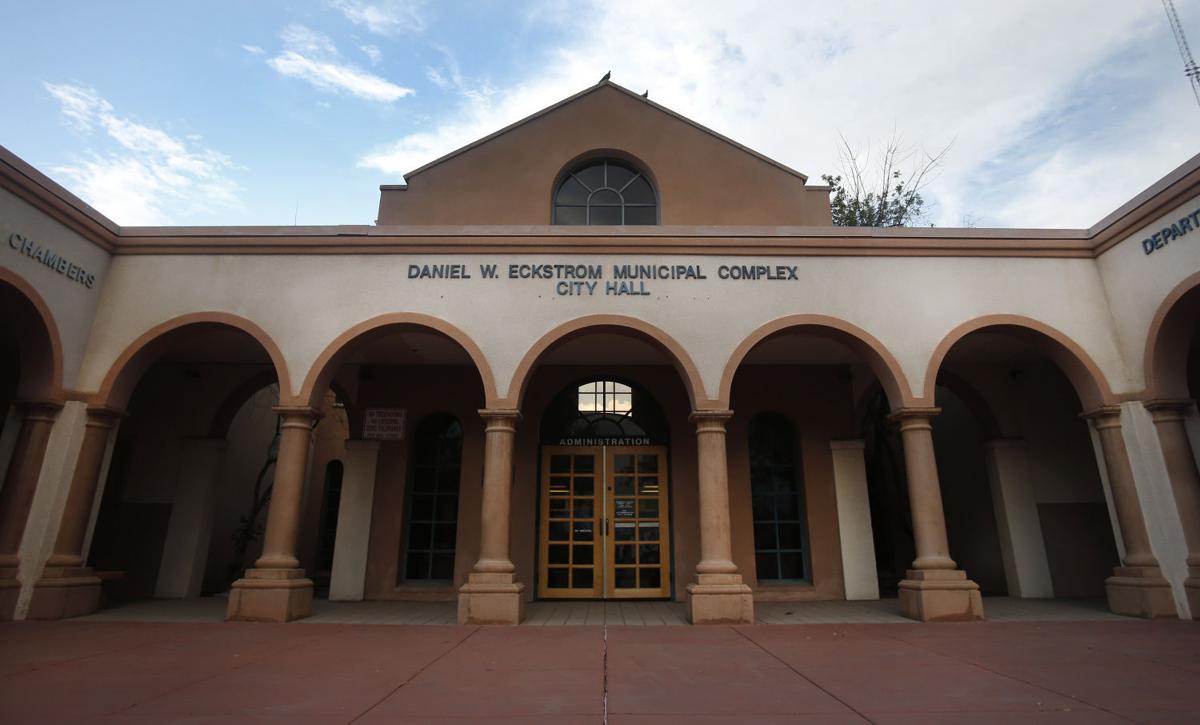South Tucson’s pension system for police officers and firefighters is breaking under the weight of dwindling assets and the ever-increasing cost of benefits.
The strain of keeping its financial promise to retirees or their surviving spouses is costing the 1.2-square-mile city an estimated $520,000 a year, with pensioners outnumbering employees paying into the retirement programs.
To keep the police pension checks going out, the city is using general funds to cover 72 percent of the program. That’s more than three times the statewide average of 20 percent of general funds being used in municipal pension plans.
It gets worse.
Of South Tucson’s nearly $8 million in estimated police pension liabilities over the next two decades, it has $176,000 invested — 2.2 percent of what it will need.
As a rule of thumb, an agency should have roughly 80 percent of its pension liabilities in some type of investment assets, said Michael Bond, a senior lecturer of the University of Arizona’s Eller College of Management. For South Tucson’s police pension, that would be roughly $6.4 million.
South Tucson’s Fire Department pension program has fared better, with $1.4 million in assets and an estimated $2 million in liabilities over the next 20 years.
“Both of these (pensions) are really underfunded, and the police plan is incredibly underfunded,” Bond said.
The police plan, he said, is the most financially precarious he has seen in his nearly 40 years in the financial industry.
Bond said the projected return on investments, calculated at 7.5 percent, is also optimistic.
“It is not impossible, but it is probably unlikely they will see that,” Bond said.
If the pension fund fails to meet its projected investment rate, he said, the city will have to make up that money from somewhere — likely by taking more from the city’s general fund.
more qualify for pensions than pay into the program
South Tucson is not alone in not saving enough for pensions, but the amount it pays to cover the costs of its police pension system ranks as the second-worst in the state. The worst, state officials say, is a pension for the Attorney General’s Office.
By comparison, the state’s pension system — which covers employees in 256 municipalities, including blue-collar employees and office workers employed by the city of South Tucson — has set aside roughly 50 percent of the money it needs to cover its pension obligations for the next 20 years.
Typically, South Tucson police officers and firefighters are eligible for a pension after 20 years of service. Newer officers could receive a pension after 15 years of service if they are at least 62 years old.
The city is paying pensions to 15 police department retirees — including three spouses — while 14 police officers pay into the program. South Tucson also has six retired firefighters, with three firefighters paying into the program.
Earlier this year, the South Tucson City Council was given the option by then-City Manager Benny Young of paying down the debt with an unspecificied one-time payment, but the Council couldn’t find the money in its $10.2 million annual budget.
Instead, the city opted to use savings from a grant from the U.S. Department of Justice to pay two officers’ salaries.
The city shifted $140,000 out of the general fund used to pay police officers, temporarily covered by the grant to shore up the police pension, South Tucson finance director Lourdes Aguirre said.
The federal COPS grants offer temporary relief but come with strings attached. By accepting them, the city agrees to fully fund the positions for at least a year after the grant funding runs out.
This could spell trouble for a city that is already struggling to find ways to increase revenues.
For example, the South Tucson City Council has agreed in principle to sell the Sam Lena Library — once a source of revenue for the city — to pay down debt it owes to Pima County. The deal also allows the city to refinance its existing debt.
finding the funding
Costs are expected to increase in the next few years, in part because of two statewide lawsuits related in compensation for pensioners.
One case increased the funding formula for retirees, which is expected to cost the city up to an additional $140,000 a year, according to memos released by the city. The other, which is still pending, could reduce employee contributions from 11.65 percent to 7.65 percent.
Interim City Manager Veronica Moreno said as South Tucson works toward gaining its financial footing, the City Council will have to find new ways to balance the competing issues of paying long-term debt with the costs of providing current services.
South Tucson Mayor Miguel Rojas said he’s confident the city will honor its commitment to retired police officers, firefighters and their widows. But he acknowledges the city needs to do more to fund the pensions.
He said the city staff is taking a hard look at the budget and will present a proposal soon to put more money back into the two programs.





